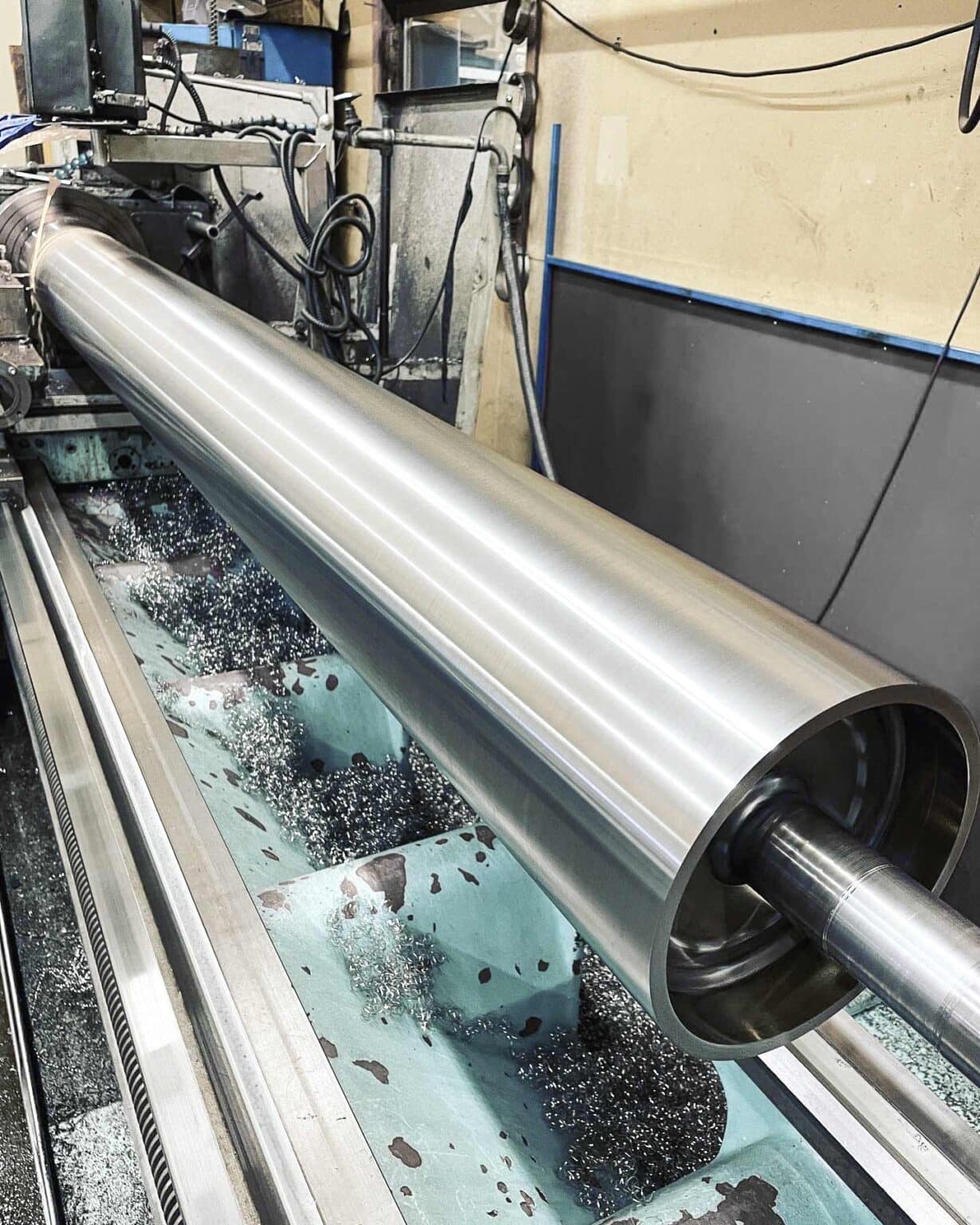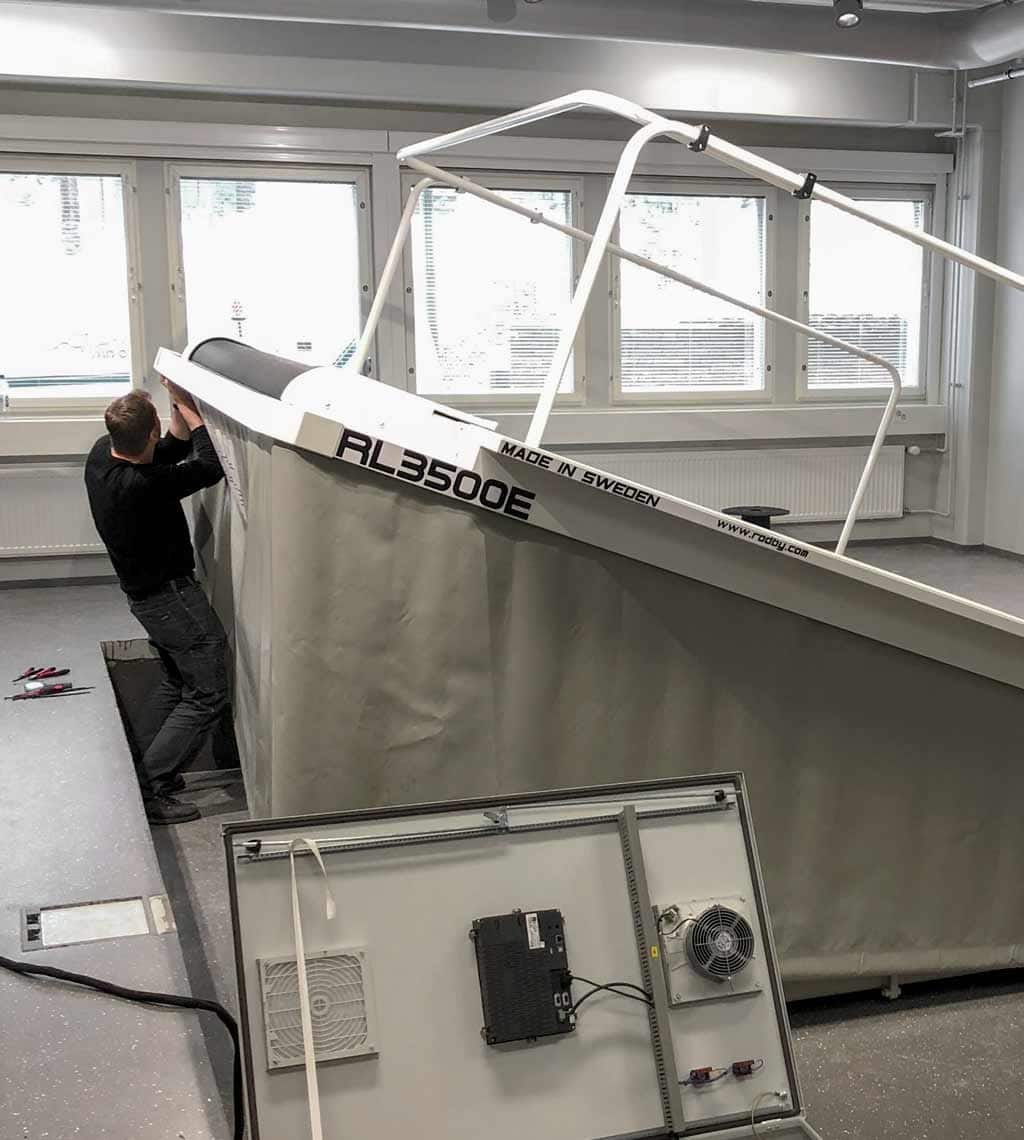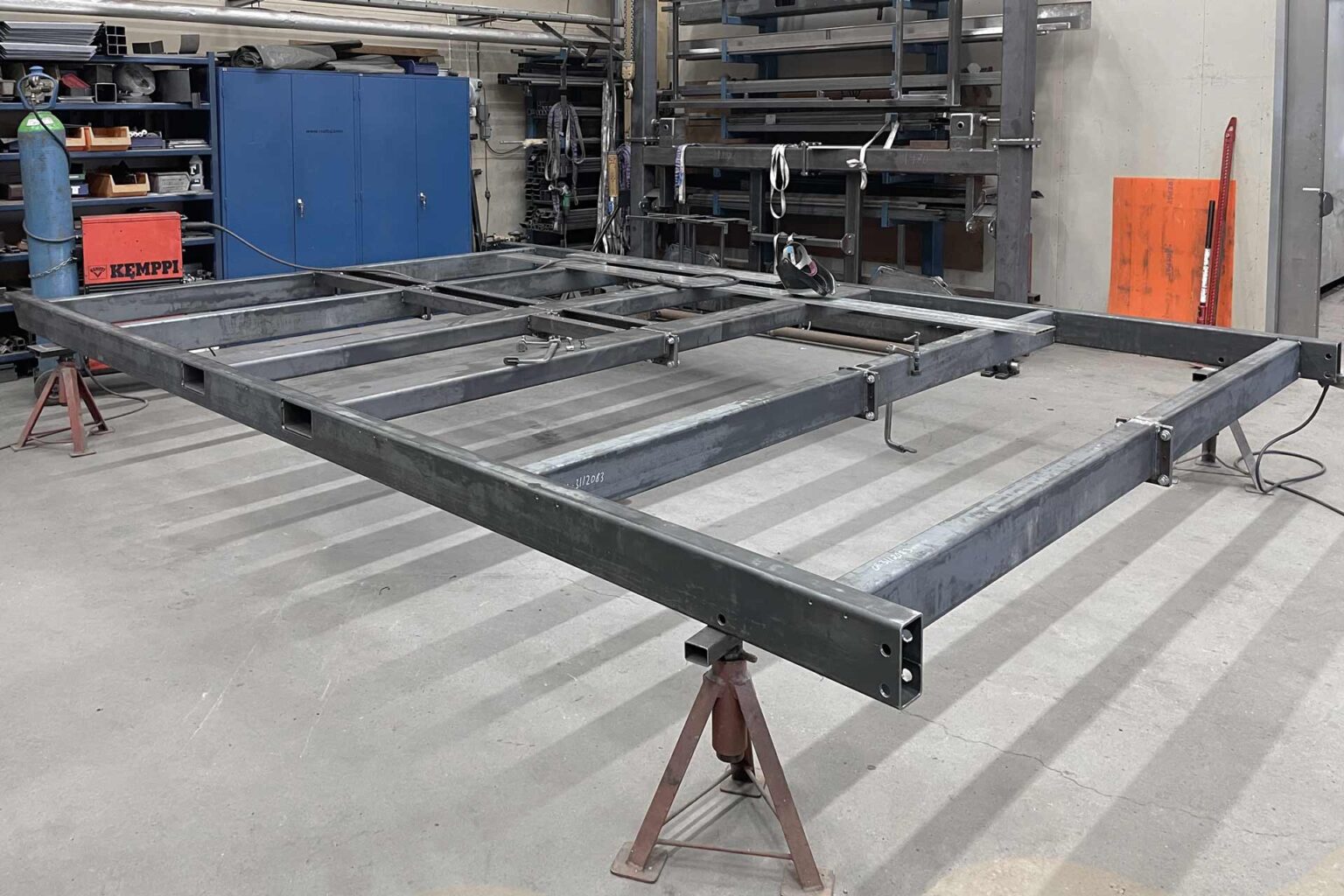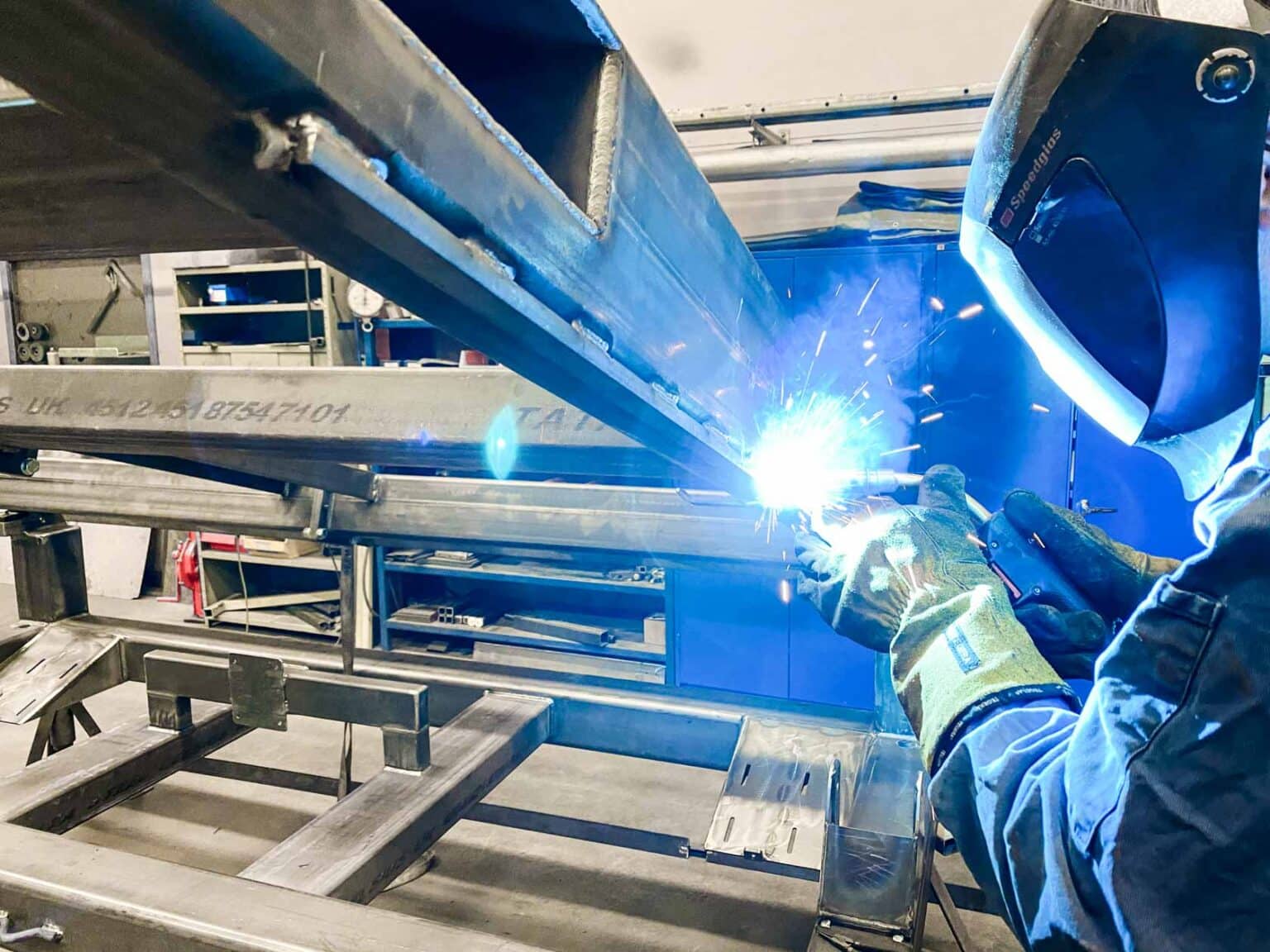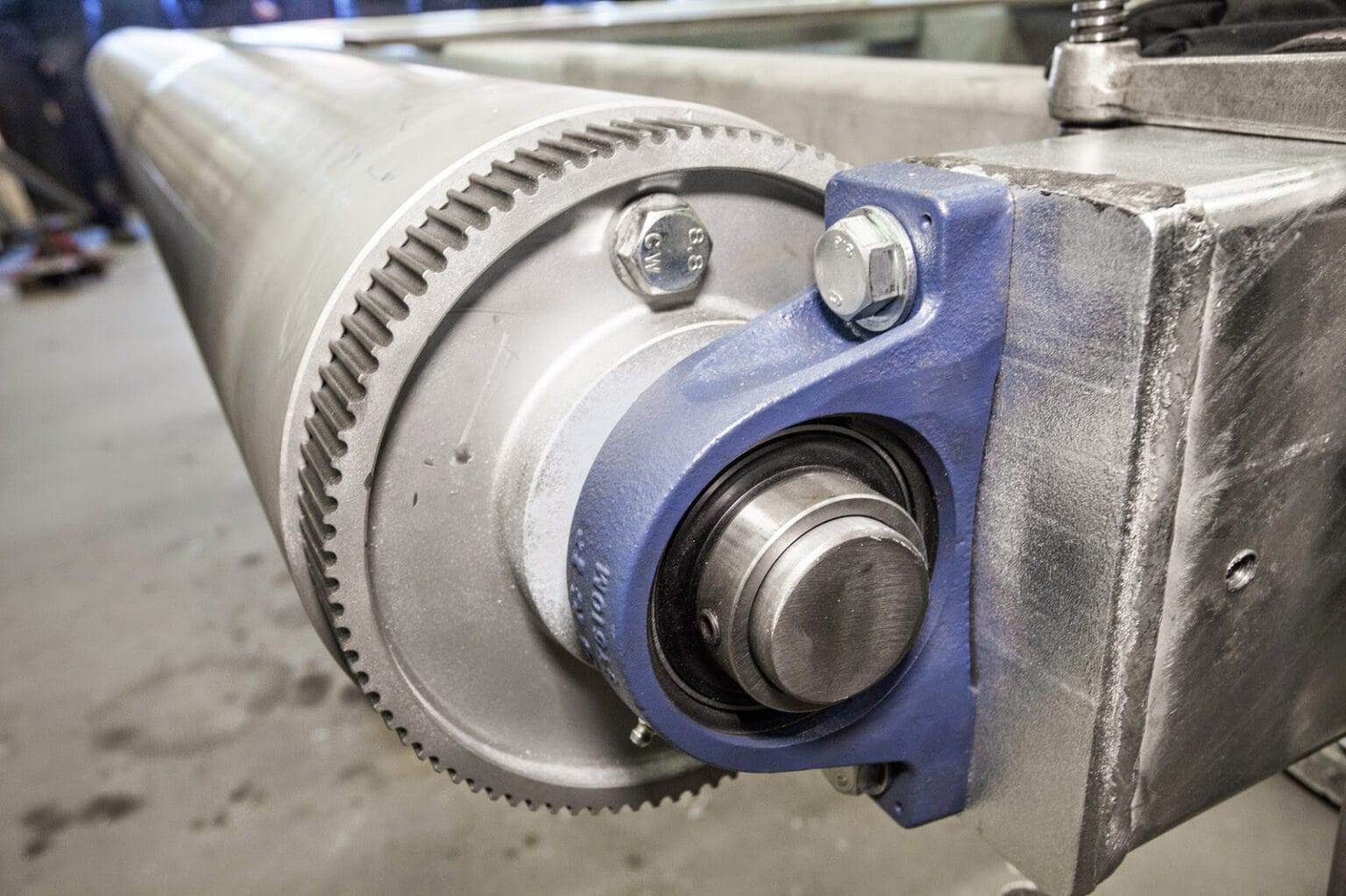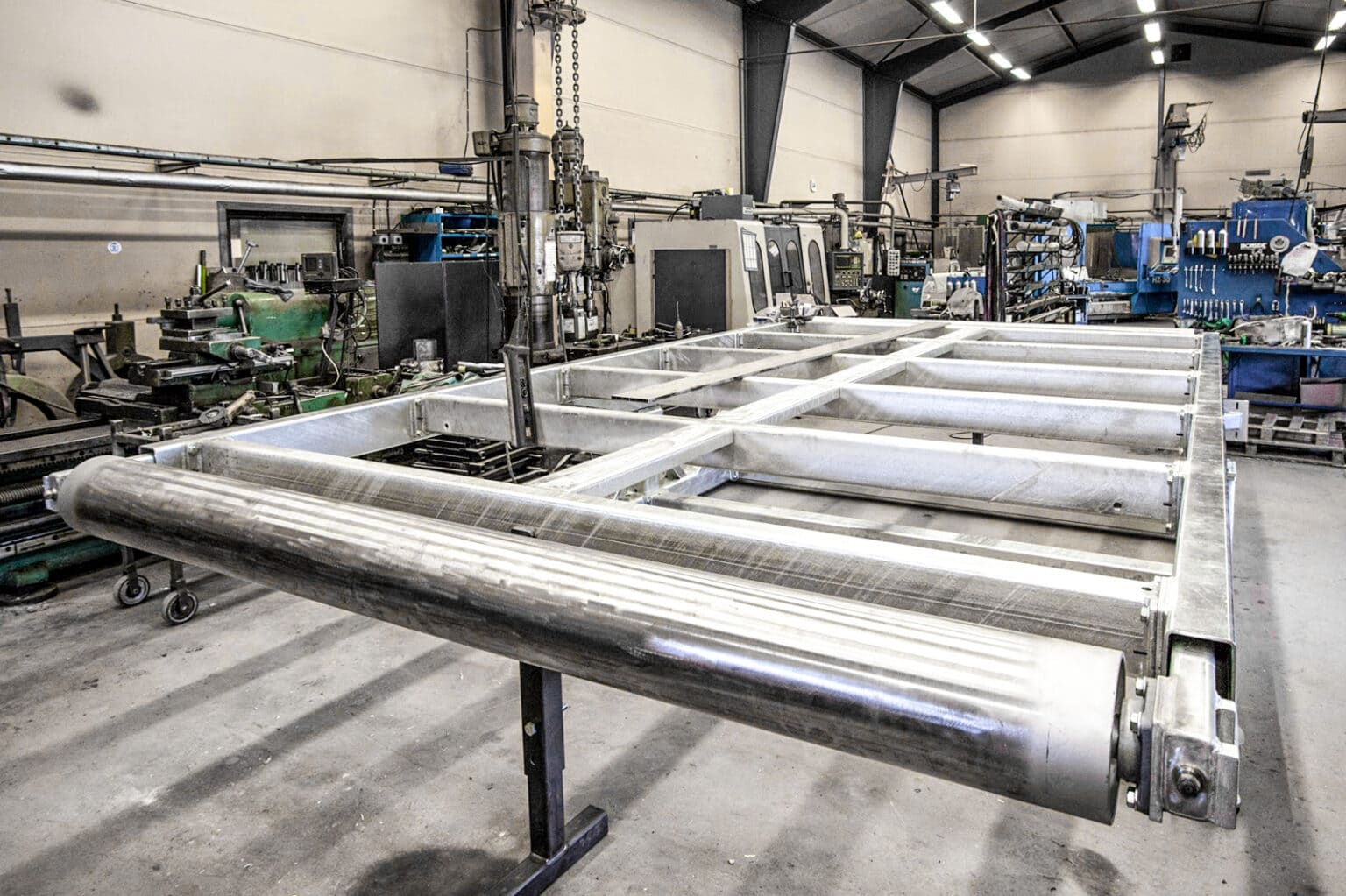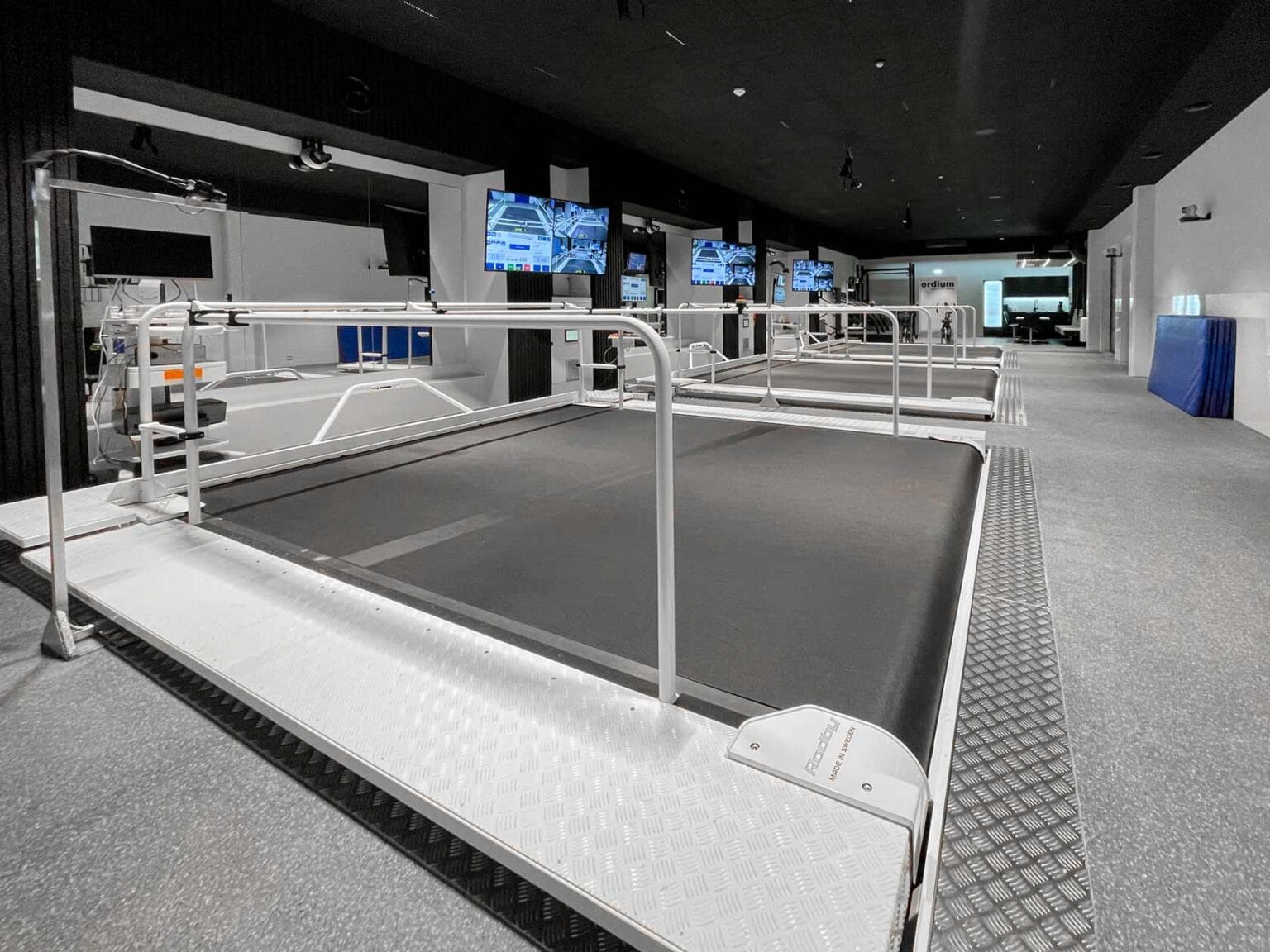Heavy rollers and rotational inertia
Heavy steel rollers provide high rotational inertia. The rollers on an RL3500E weigh approximately 240 kg each. The rollers on an RL5500E weigh 300 kg each. With every interaction between the athlete and the belt, the forces (which always act at an angle downward onto the belt) from the athlete’s weight and movements are transmitted to the rotating rollers. In sports involving powerful, short contacts – such as running, roller skiing, or pole planting – these forces become more significant:
- The runner’s step and the force from foot strike, especially during acceleration, interval training, hill workouts, and at maximum speed.
- The roller skier’s wheel contact and push-off during powerful skiing, as well as during acceleration, interval training, sprint techniques such as double poling and full-speed movements (toward the finish line), particularly in combination with an elevated incline for hill training.
- The roller skier’s pole planting, where the force ranges from moderate during training in high gears of cross-country skiing techniques to significant forces during uphill training and double poling.
These forces, if the rollers lacked sufficient rotational inertia, would disrupt the rotation and negatively impact the user’s experience. The high rotational inertia in Rodby’s rollers effectively counters these forces, providing a smooth and continuous belt movement.
The steel rollers are machined in Rodby’s own mechanical workshop in Sweden. With extensive experience and technical expertise, Rodby knows what is required for the rollers to provide vibration-free operation at all speeds and rotational rates. As a result, the treadmill is minimally affected by the user’s movements and contact with the belt.
The importance of rotational inertia when the treadmill is elevated
- Gravity: When the belt is elevated, the athlete must work against gravity. A greater portion of the force is used to overcome body weight, meaning that more force is transferred to the belt and subsequently to the rollers.
- Increased force during contact: On an incline, more force is required at each contact point to propel oneself forward. This increases the pressure on the belt and, consequently, the force transferred to the rollers.
The importance of steel frames for quiet operation, stability, and durability
The frames of all Rodby treadmills are constructed from hot-finished steel structural hollow sections (specified in EN 10210), consisting of robust square or rectangular hollow profiles. The frame is manufactured in Rodby’s own mechanical workshop to ensure the highest quality and precision.
The structural sections are cut and welded into two frames: the lower frame and the top bed. The lower frame rests on the floor, and the top bed is connected to the lower frame so that the top bed can be elevated.
The frame is deliberately dimensioned to comfortably withstand extreme use, even at high speeds and across all sports disciplines practiced on Rodby’s treadmills.
The heavy frame plays a crucial role in the treadmill’s performance by:
- Stability and vibration damping: The robust steel frame contributes to both stability and effective vibration damping. This ensures quiet and smooth operation, even during high-intensity training or at high speeds. By absorbing vibrations arising from treadmill operation and the athlete’s interaction with the belt, a more pleasant user experience is created, while wear on mechanical components is reduced.
- Long-term durability: The frame is designed to withstand high-frequency, intensive use over a long period. The heavy construction helps minimize deformation and material fatigue, extending the treadmill’s lifespan and ensuring consistent performance year after year.
- Adaptability to different users and environments: With its sturdy frame and stable construction, Rodby’s treadmills can accommodate users of different weight classes and adapt to various training environments, from professional sports facilities to research settings.
Rodby’s treadmills are heavy, and this weight is a positive feature. For example, the Rodby roller ski treadmill RL2700E x 1000 weighs 450 kg, while the larger model RL3500E x 2500 weighs 2,850 kg.
This weight is a clear indication of the robust and durable construction that ensures quiet, vibration-free operation, long-term use, and stability.
Compare Key Factors
If you are considering a Rodby treadmill in comparison with other brands, both cheaper and more expensive, we recommend that you base your comparison on two categories of key factors:
Measurable factors
These factors can be directly compared using data provided by the manufacturer:
- The weight of the treadmill.
- The weight of the rollers.
- Motor type and motor power (where Rodby’s motors deliver maximum torque at only 1 revolution per minute).
- Long-term cost efficiency – While Rodby treadmills may have a higher initial cost, they become cheaper over time due to their durability, minimal maintenance, and longer lifespan, reducing the need for frequent repairs and replacements.
- Price.
Subjective factors and user experience
These factors concern the long-term experience and performance:
- Vibration-free operation
- Quiet performance
- Stability and durability over time
- The user’s experience of the belt’s smoothness and precision under various training conditions
By considering both the measurable and perceived aspects of performance, the differences between consumer, semi-professional, and professional treadmills offered by Rodby become clear.

